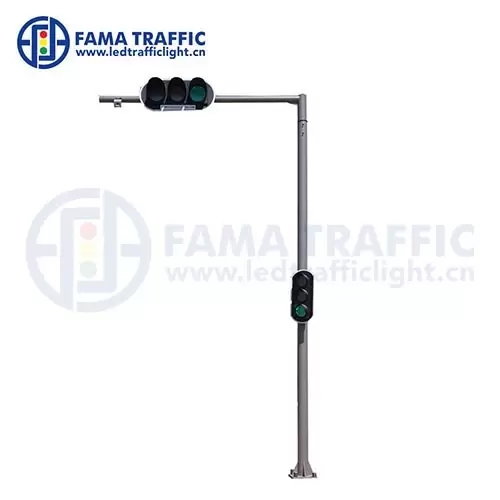In today's fast-paced manufacturing environment, maintaining product quality is no longer optional, but a critical factor in determining success in a highly competitive market. In this article, AlVS will share what AOI automated optical inspection service is, their benefits and applications, and how to improve the efficiency and quality of your production processes. Utilizing advanced imaging and processing technologies, AOI systems provide unparalleled accuracy and efficiency, enabling manufacturers to deliver flawless products while minimizing production costs and risks.
What is AOI Automated Optical Inspection?
Automated Optical Inspection (AOI) is a technique used primarily in the electronics manufacturing industry to inspect and analyze electronic assemblies, such as printed circuit boards (PCBs), for defects or inconsistencies. Unlike manual inspection methods, which are prone to human error, AOI relies on advanced cameras, lighting systems, and image-processing algorithms to detect flaws with remarkable precision.
AOI automated optical inspection services are offered by specialized providers that integrate AOI systems into production lines or operate as third-party quality assurance partners. These services cater to a broad spectrum of industries, including consumer electronics, automotive, aerospace, and medical devices, where zero-defect quality is paramount.
How AOI Systems Work?
The operation of AOI systems revolves around capturing high-resolution images of the product and analyzing them against predefined parameters or reference data. Here's a simplified overview of how AOI systems function:
1. Image Capture: High-speed cameras take detailed images of the product under specific lighting conditions. Advanced AOI systems use 3D imaging to assess depth and height for more comprehensive inspection.
2. Image Processing: Sophisticated algorithms analyze the captured images, comparing them to design specifications or "golden samples." Any deviation from these parameters, such as missing components, misalignments, soldering defects, or surface irregularities, is flagged as a defect.
3. Defect Classification: Once a defect is detected, the system categorizes it into types (e.g., minor or critical) to help manufacturers prioritize corrections.
4. Feedback and Reporting: AOI systems generate detailed reports and provide real-time feedback, enabling operators to address issues promptly and improve process control.

Benefits of AOI Automated Optical Inspection Service
1. Improved Accuracy and Defect Detection
Manual inspection methods often struggle to detect microscopic defects or inconsistencies in high-density products like modern PCBs. AOI services, on the other hand, leverage advanced optics and machine learning algorithms to achieve near-perfect detection rates. This ensures that even the smallest defects are identified and addressed before they escalate into costly failures.
2. Faster Inspection Processes
In industries where time-to-market is critical, speed is as important as accuracy. AOI systems can inspect hundreds of components within seconds, significantly outpacing manual methods. This high-speed operation enables manufacturers to maintain quality without compromising production timelines.
3. Reduced Costs
While the initial investment in AOI systems or services may seem high, the long-term cost savings are substantial. Early defect detection reduces the expense associated with rework, scrap, and warranty claims. Moreover, automating inspection processes decreases labor costs and enhances overall productivity.
4. Consistent and Reliable Quality Control
Unlike human inspectors who can become fatigued or inconsistent over time, AOI systems deliver reliable results 24/7. This consistency is especially critical for industries with strict quality standards, such as medical devices or automotive components.
5. Enhanced Data Insights
Modern AOI systems not only detect defects but also collect valuable data that manufacturers can use to improve their processes. By analyzing defect trends, manufacturers can identify root causes, optimize production parameters, and reduce defect rates over time.
Applications of AOI Services
While AOI services are most commonly associated with PCB manufacturing, their applications extend far beyond:
- Automotive Industry: In vehicle electronics, AOI ensures the reliability of components like sensors, control modules, and lighting systems.
- Aerospace Sector: AOI plays a crucial role in inspecting components for avionics systems, where safety is paramount.
- Consumer Electronics: From smartphones to wearables, AOI services help ensure the reliability and aesthetic appeal of mass-produced gadgets.
- Medical Devices: AOI systems inspect complex medical devices, such as implantable devices or diagnostic equipment, to meet stringent regulatory requirements.
Conclusion
In a world where quality can make or break a brand, investing in AOI automated optical inspection services is not just a smart move - it' s essential. These services offer manufacturers the tools they need to maintain impeccable quality, reduce costs, and stay competitive in today' s demanding markets. Whether you' re producing intricate electronics or safety-critical components, AOI systems ensure that every product leaving your facility meets the highest standards.
By partnering with a reliable AOI service provider, manufacturers can achieve a perfect blend of efficiency, precision, and peace of mind, paving the way for sustained success in the modern manufacturing landscape.
https://www.aivs-vision.com/Benefits-of-AOI-Automated-Optical-Inspection-Service.html
www.aivs-vision.com
AlVS


